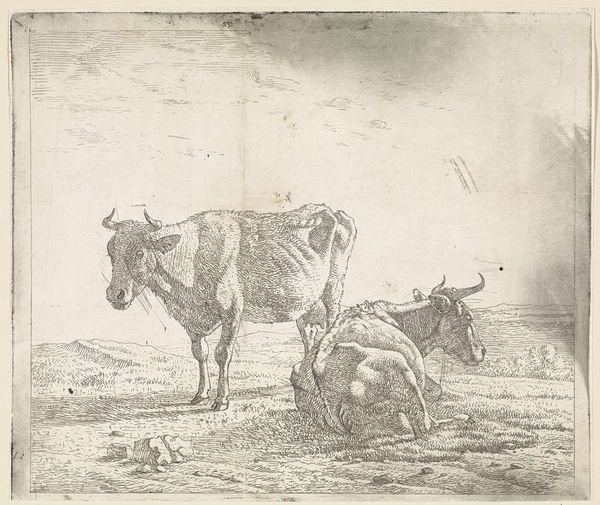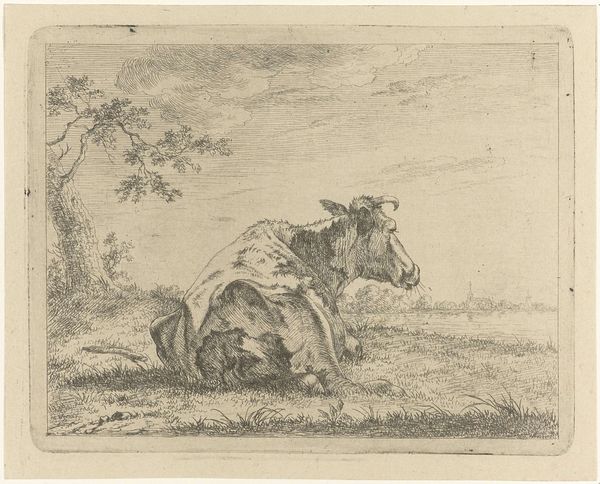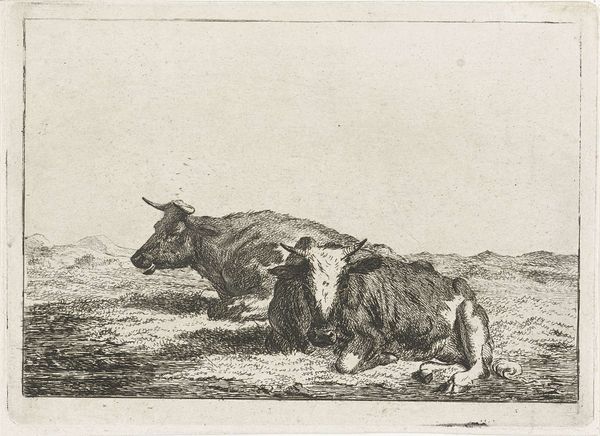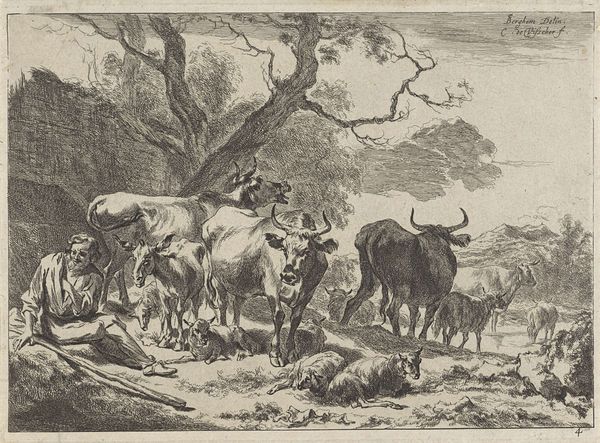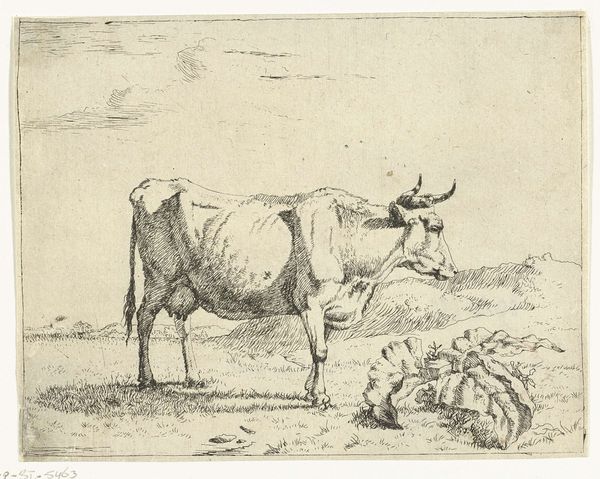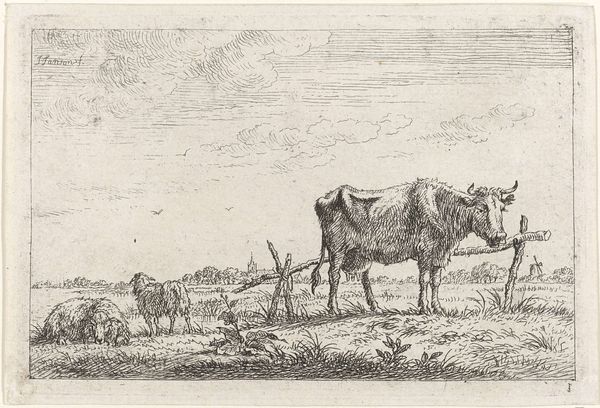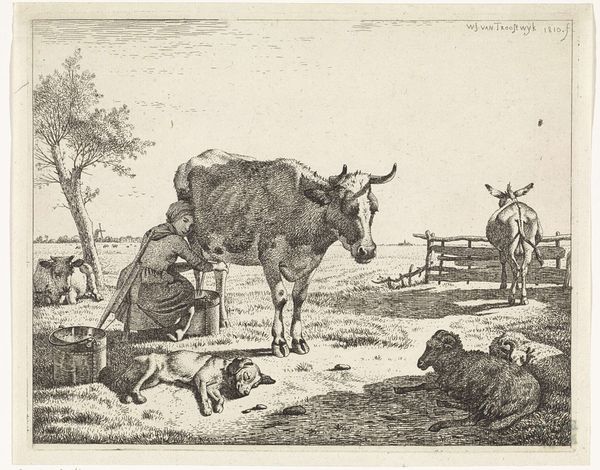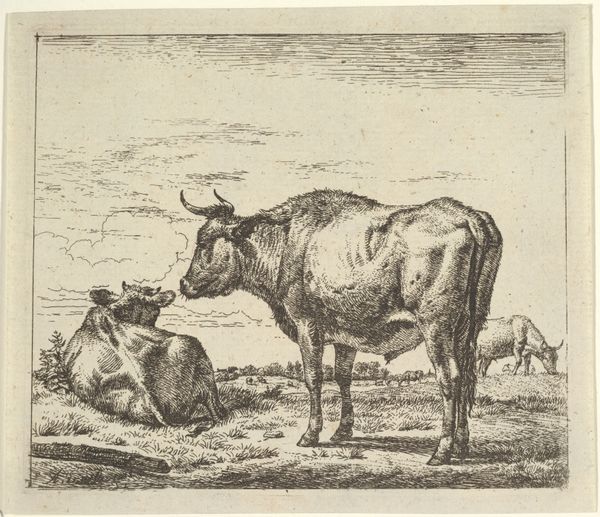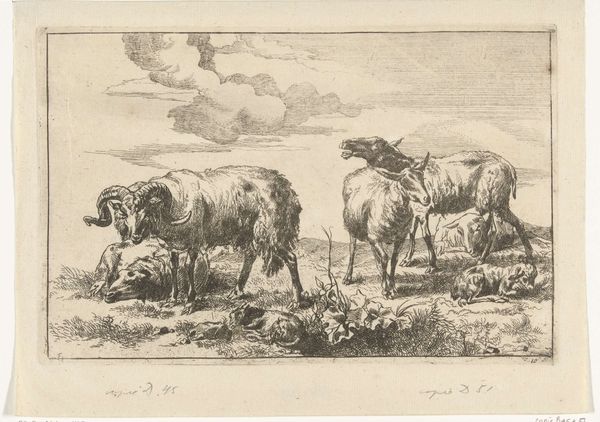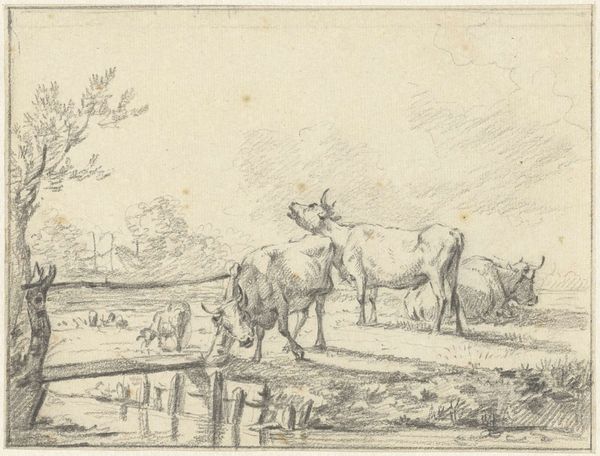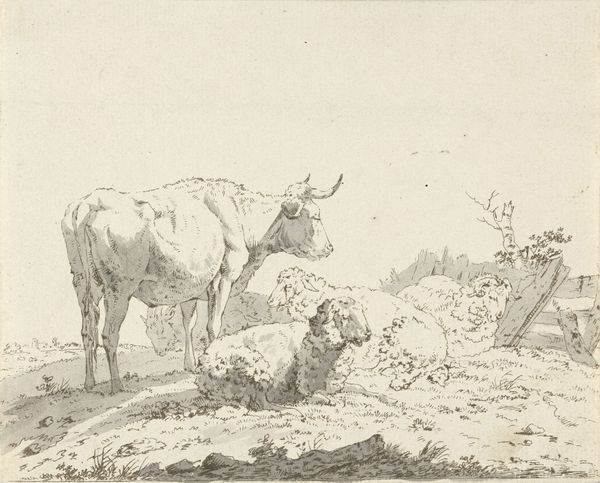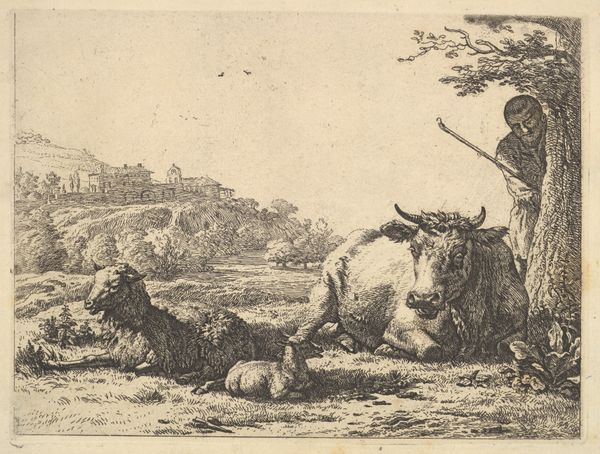
Dimensions: height 139 mm, width 178 mm
Copyright: Rijks Museum: Open Domain
This etching, Landschap met liggende koe, was made by Johannes Janson sometime in the 18th century. He used a metal plate, likely copper, coated with a waxy ground, then scratched through it with a fine needle to create this pastoral scene. Janson then submerged the plate in acid, which bit into the exposed lines, leaving an image that could be inked and printed. Look closely, and you can see how the density of lines creates areas of shadow and depth, giving the cow a sense of weight and volume. The landscape is rendered with a lighter touch, suggesting distance and atmosphere. Printmaking like this was a key technology in the 1700s. It allowed for the mass production of images, and the dissemination of ideas about nature, labor, and rural life. Consider the labor involved - from the engraver's skill to the printer's toil - and how this image, multiplied and distributed, shaped perceptions of the Dutch countryside and the animals that sustained it. Appreciating the material process helps us understand the image's wider cultural significance.
Comments
No comments
Be the first to comment and join the conversation on the ultimate creative platform.
